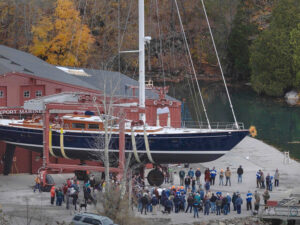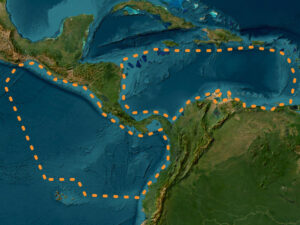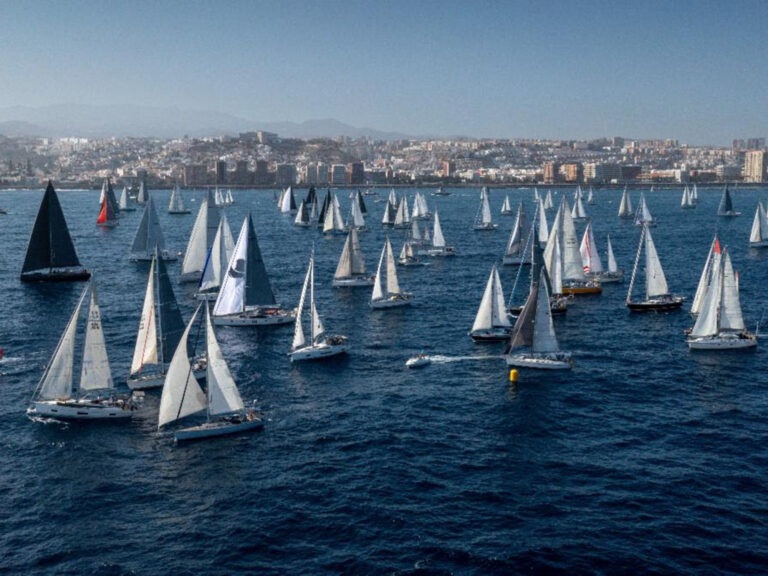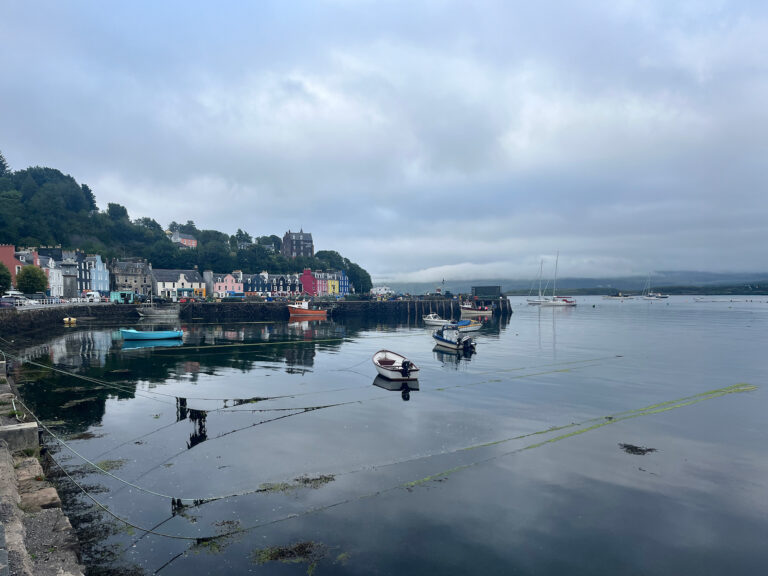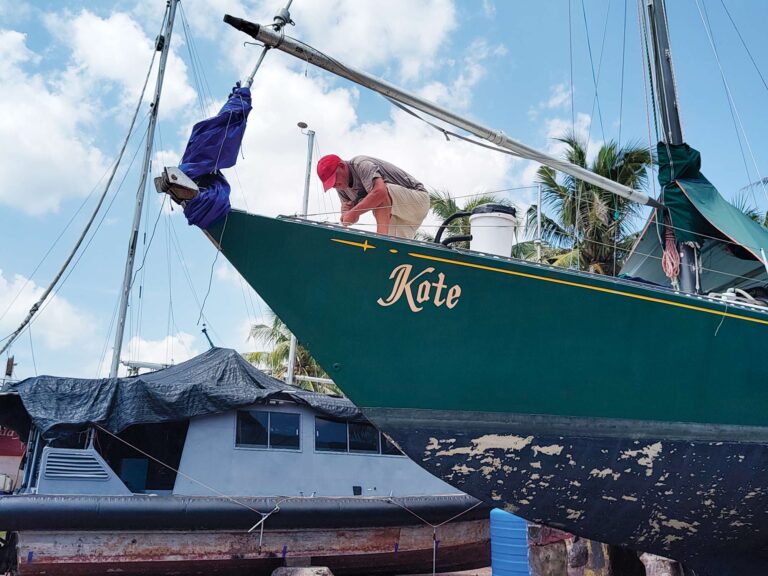At home on land, families practice fire drills with their children and teach them how to safely cross busy roads. On a boat, there are similar concerns. Make sure your children are good swimmers: Our daughter, Olivia, took swimming lessons for two years before we left on our two-year cruise to the Bahamas and the Caribbean.
Children should be taught what to do in case of an emergency, especially on a shorthanded family cruising boat. By age 5 or 6, kids can use the VHF radio, and they can be taught proper Mayday procedures, just as you teach them to dial 911 at home. Older kids should know how to use the SSB in an emergency. They should also know where the through-hulls and bilge pump are. They need to known where the flares and fire extinguisher are kept-and how to use them.
Practice your man-overboard plan. Even young children can be assigned the role of “spotter” in a man-overboard situation. On Zora, our Mariner 39, Olivia knew she was to immediately drop what she was doing, don her lifejacket, come on deck, and point at the person in the water, never taking her eyes off him, while the other parent maneuvered the boat. Our friends Adrienne and Herb, who cruised with young Sophie and Anna aboard Adrianna II, had several unplanned “baby-overboard” drills when Sophie’s favorite doll fell in. Each family member performed his or her assigned role, and the girls, as spotters, learned how difficult it can be to keep sight of a person in the water.
On board, it’s important to set realistic rules and to be consistent. When we began living aboard, Olivia was only 7, and we were sailing in cold northern waters. Falling overboard was a serious concern. Despite her complaints, we insisted that she wear her lifejacket or clipped-on harness on deck at all times, unless she was sitting in the cockpit with a parent. The first weekend we were out, she slipped while boarding the dinghy and fell into the icy water in Pemaquid, Maine. She claimed it wasn’t scary, but I believe she took the safety rules rather more seriously after that!
Kids who grow up on boats with a healthy respect for the wind and sea are no different from kids playing on a farm with its inherent dangers of machinery and livestock, or city kids who must learn to navigate safely in traffic and crowds. Instead of worrying their parents by climbing tall trees or skating on thin ice, cruising kids are swinging from halyards and begging to climb to the spreaders.
By the end of our cruise, Olivia was 9, a much better swimmer, and quite agile on deck. We didn’t require her to wear her lifejacket or harness at all times, but we used our common sense. For instance, at anchor, if there was a strong current or conditions were rough, the lifejacket went on. Other cruising families had similar rules, such as requiring PFDs while under way.
Helpful Resources For Cruising Families
There are a few websites parents and their children can consult before leaving and while they’re out there, such as (www.thecruisinglife.com or www.kidsaboard.com). And some cruising families have their own websites (www.sailzora.com, www.sailingohana.com, www.spoonycat.blogspot.com, www.svgrace.net, www.sailmakanikai.com, www.islandsynergy.com).
There are a number of homeschooling choices, so do your homework before you go cruising to find the one that’s best for your kids. The Calvert School (www.calvertschool.org) has a structured, complete K-8 curriculum, and advisory teachers are available for consultation. The Oak Meadow School (www.oakmeadow.com) has Waldorf-style correspondence courses for grades K-12. We found that many cruising families use Saxon Homeschool (www.saxonhomeschool.harcourtachieve.com) for extra help in math in conjunction with other curriculums.
Teaching supplies, textbooks, workbooks, test-prep materials, and more can be found at the online retailer TeachChildren (www.teachchildren.com). Another online resource for homeschooling information, including articles and message boards, is HomeSchool (www.HomeSchool.com). Home Learning Year By Year: How to Design a Homeschool Curriculum from Preschool Through High School by Rebecca Rupp (Three Rivers Press) is a great book with good advice on homeschooling and typical curriculums for grades K-12.



